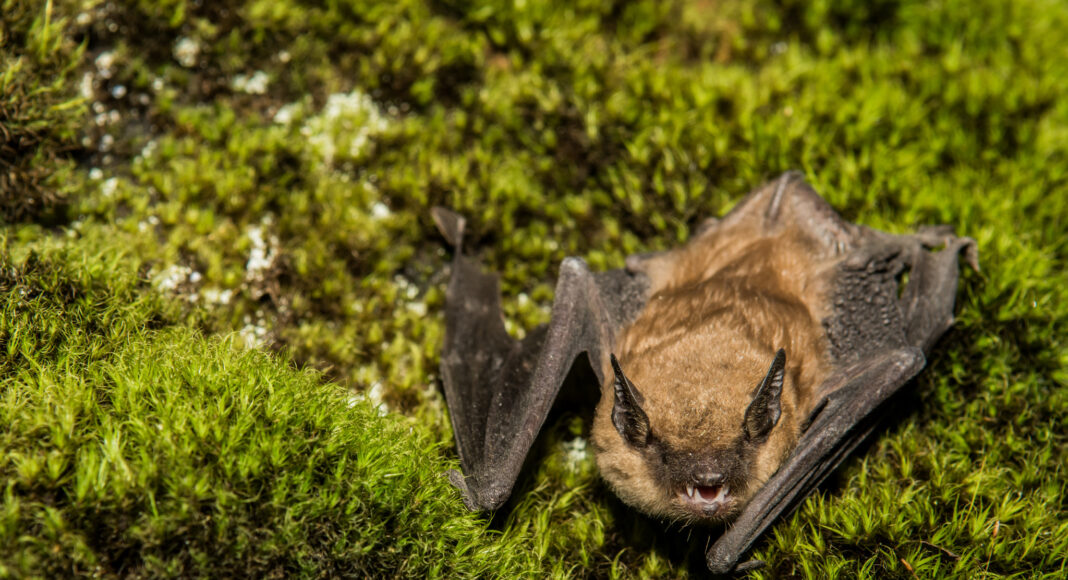While waiting for the release of The Invisible Mammal, local residents can learn more about local bat species and how to support conservation efforts.
Bats render a public service by using their superior senses and echolocation to consume pest insects like moths, flies and mosquitoes that are known to destroy crops in small gardens and farms. One bat is capable of eating 1,000 mosquitoes in an hour. Through their work alone bats have been known to aid in protecting crops like corn and rice, saving U.S. farmers roughly $22 million annually. This natural defense against pests can be used as an alternative to expensive chemical pesticides.
Though Santa Clara County doesn’t have anything like what can be seen in the Yolo Bypass Wildlife Area—where huge numbers of bats roost under the Yolo Causeway and take off from a central spot at night—there are still local spots to encounter bats.
According to Winifred Frick, a USCS professor and chief scientist with Bat Conservation International, common bats in Santa Clara County include the Yuma myotis, a small species that likes to forage in riparian areas. “If you’re out at dusk and seeing bats flying over water, it is most likely this species,” she says.
Big brown bats also live around here, Frick says. This species can be seen at dusk flying over ponds or in and out of trees at the edges of meadows. And Mexican free-tailed bats—the same species seen from the Yolo Causeway and the Congress Bridge in Austin, Texas—are also common. “They can form really big colonies under bridges,” Frick says.
According to the Santa Clara County Open Space Authority, other residents of Santa Clara County are the pallid bat, the red bat, the hoary bat, the silver haired bat and the canyon bat.
On its website, the Open Space Authority advises that the best time of year to see bats in the Bay Area is from June to September. Watch for them near bodies of water; they arrive at dusk to hunt for insects. Bats may also be seen at Starry Nights astronomy events at Rancho Cañada del Oro Open Space Preserve.
Further up the bay, the staff at East Bay Regional Parks have observed bats in 10 locations, including the Townsend’s big-eared bat and the pallid bat at the Sunol Regional Wilderness, and the pallid bat also at Black Diamond Mines Regional Preserve. At sunset, visitors to Lake Del Valle in Livermore’s Del Valle Regional Park can watch mouse-eared bats soar across the water’s surface in search of their evening insect meal.
Christine Zack of Environmental Volunteers also shares some insights for bat watching. “I’ve seen bats personally in Sanborn Park and McClellan Ranch Park. I know from iNaturalist posts that bats have also been observed in Stevens Creek County Park and Vasona Park,” Zack says.
Areas where campfires are allowed can provide good viewing opportunities. “Campfires are often the best place to see bats as they are drawn to the bugs that come to the light,” Zack says.
For serious naturalists, Zack offers this tip: “Bats can be very hard to spot and almost impossible to identify visually at night in flight. Most often you might hear them before you see them. Sometimes you can hear some of the clicks from their echolocation during hunting. If you are truly interested in bats, I would suggest getting a bat detector, which is a small device you connect to your smartphone. By sound, not only does the bat detector help you identify the bat species by specific sound waves but it allows you to find bats you may not actually see but are in the park.”
However, these amazing creatures are starting to dwindle in number. “The good news is that a number of species can survive in urban areas,” UCSC’s Frick says. But habitat loss still affects many species. And white-nose syndrome, a fungal disease that infects hibernating bats, has already killed six million bats since 2006. Though the fungus has been detected in the state, Frick says, “In California we haven’t seen declines … we have yet to see evidence that the disease has taken hold here.”
But there are other factors of concern to Frick and Bat Conservation International. “We’re worried about the impact of lower insect populations,” she says. There are various contributing factors to insect decline—the extent of habitat loss and degradation, the use of pesticides in agriculture, and climate change. But whatever the causes, this decline will have profound effects on bats and other species dependent on insects for food.
Those seeking to help bats might want to consider putting a bat house on their property. The organization NorCal Bats offers a good rundown on various brands of bat houses as well as information on how to build one’s own models. But Frick cautions, “Not every bat house that goes up ends up getting colonized, and it’s hard to say what increases the odds of success.” She recommends that individuals can have a bigger impact by supporting groups that are looking for ways to preserve habitat. “All the work to protect open space in the Santa Cruz Mountains is good for our native bat populations,” she says.
To learn even more about bats, here are some useful programs:
The Peninsula Open Space Trust did an online event with NorCal Bats that can be viewed on YouTube. The presentation includes information on how human contact poses a health threat to bats.
The Midpeninsula Regional Open Space District provides links to many useful resources, including information about the bats that roost at Bear Creek Redwoods Preserve and the “bat cave” volunteers built in an old carport.
Environmental Volunteers offers a community program called All About Bats for interested community groups (scouts, after-school programs, day camps, nature organizations). To find out more, email community programs coordinator Drew Thompson, dr**@***ls.org or visit evols.org.



